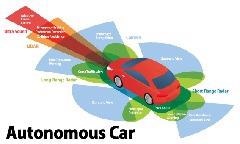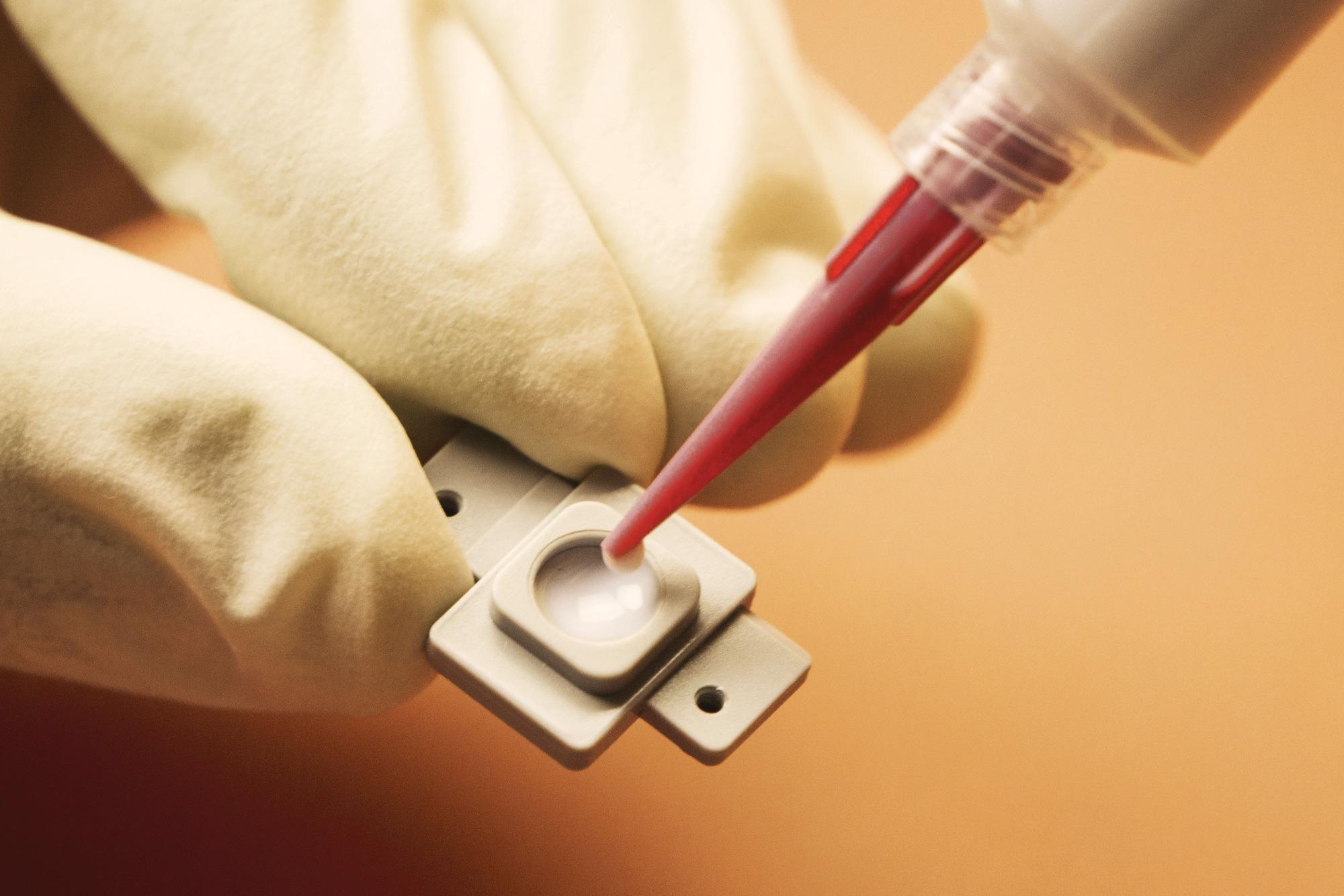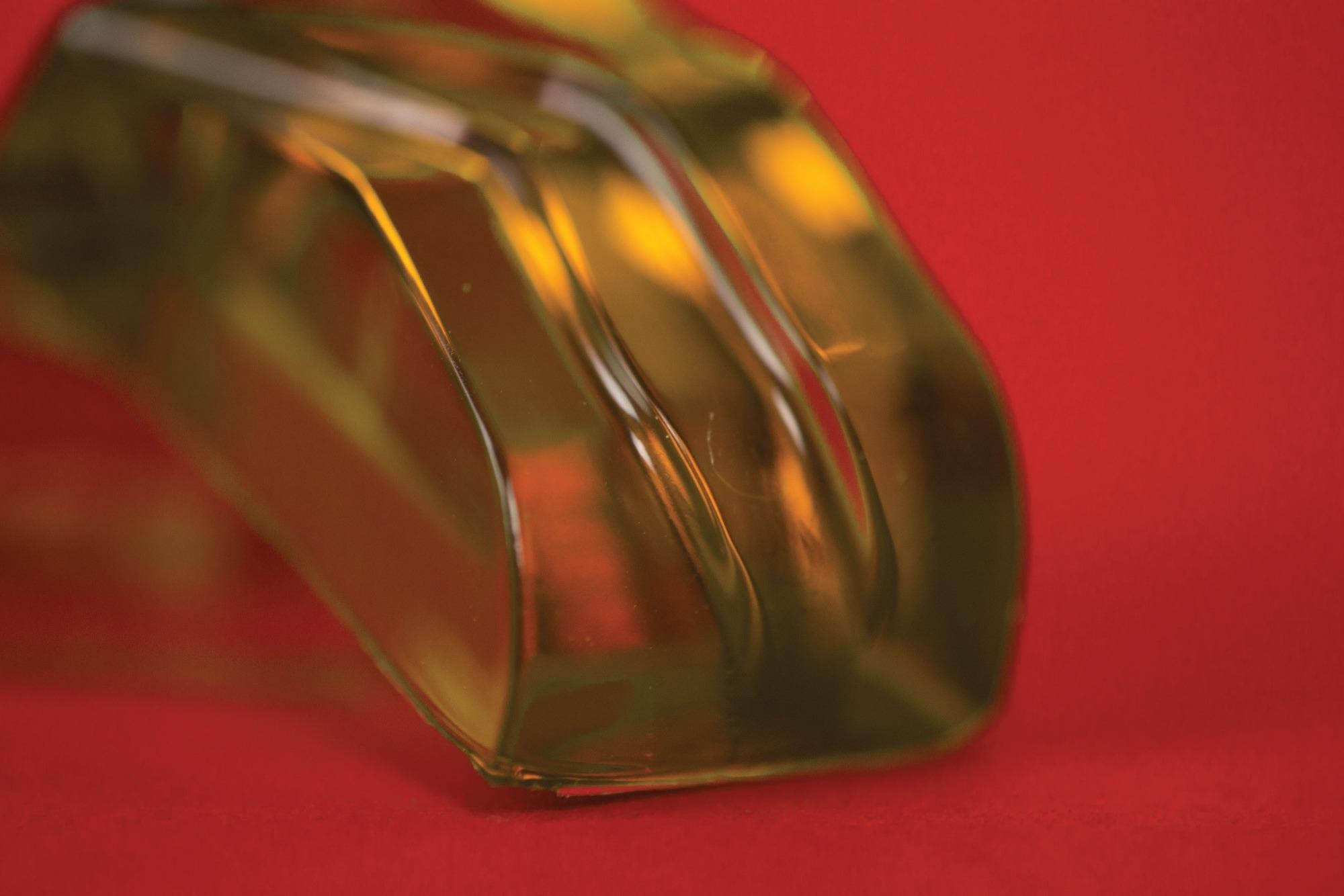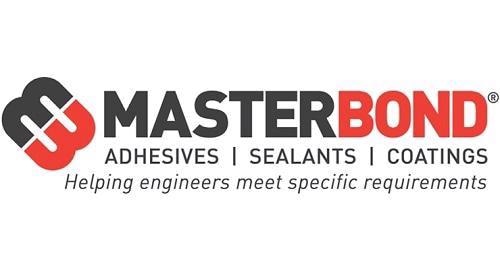Light detecting and ranging (LIDAR) is a popular sensing technology in a diverse array of industries, including:
- Defense
- Robotic mining
- Oil and gas exploration
- Meteorology
- Solar energy
- Gaming
- Automotive
- Aerial and terrestrial scanning
- Roadway design
- Laboratory testing
- Law enforcement
- Agriculture
LIDAR uses light waves from a laser beam pulsing at up to 150000 pulses per second. The amount of time it takes the reflected light to return to the sensor located within the LIDAR module is measured to calculate the distance to the target.

Image Credit: Master Bond Inc.
LIDAR offers superior performance than radar and sonar due to its use of light waves rather than sound or radio waves.
LIDAR technology is generally comprised of a transmitter, receiver and detector – a combination able to generate accurate, precise 3D representations (also referred to as 3D laser scanning).
High-resolution LIDAR mapping is exceptionally exact and can be collected at a rapid sampling rate.
Master Bond Adhesive Products
Master Bond offers a comprehensive range of customized polymeric formulations, specifically compounded to deliver robust, reliable solutions ideally suited to the high precision assembly of LIDAR remote sensing systems.
The company’s team of experienced engineers possesses an array of technical expertise to support manufacturers looking to develop advanced LIDAR capabilities while maintaining compact sizes and minimal weight.
A number of innovative LIDAR designs have been augmented via the application of unique Master Bond adhesive compositions. These have helped facilitate die attachment, EMI shielding, electrical conductive connectivity, lens bonding, low stress and gap filling.
Master Bond has also supplied a range of thermal interface materials for interfacing fragile components and a wide range of potting/encapsulation compounds, board level underfills, liquid gasketing sealants and conformal coatings.
These have been particularly useful in protecting these versatile yet delicate systems from harmful environmental conditions, including mechanical shock, thermal cycling, dirt, dust, water ingress, corrosive chemicals, vibration and thermal degradation.
Master Bond’s single component, rapid curing UV compounds have been successfully used to attach a lens to a lens barrel.
The deployment of dual UV/heat curing products ensures effective alignment of essential components prior to final polymerization at low temperatures, meaning that adhesives offer a straightforward, viable alternative to soldering when attaching components.
Advanced LIDAR technology is a key driver in the potential widespread adoption of self-driving autonomous vehicles - as these become more accessible and more reliable, autonomous vehicles are expected to have a tremendous impact on both society and industry.
Replacing manually driven vehicles with autonomous vehicles offers a number of tangible benefits, including:
- A reduction in the number and severity of auto accidents attributed to fatigue or human error
- Reduced noise pollution
- A reduction in fuel consumption and CO2 emissions
- Less traffic congestion
- Minimal rush hours
The use of autonomous vehicles may provide accessible transport options for older and disabled people while reducing travel times and making parking more efficient.
When implementing these vehicles, they require extensive computer programming, creating new jobs.
There are a number of huge technical, legal and social challenges which still need to be addressed, but considerable progress has been made towards unlocking the full potential of this ground-breaking new technology.
Master Bond UV22DC80-1 - Nanosilica-Filled, Dual Cure Epoxy-Based System
Master Bond’s UV22DC80-1 is formulated to cure upon exposure to UV light while also having the capacity to crosslink in shadowed areas once heat is added. Its key features include:
- Minimal shrinkage upon curing
- Excellent optical clarity
- Low viscosity
- Cures at 80 °C in shadowed out areas

Image Credit: Master Bond Inc.
UV curables will crosslink rapidly and thoroughly upon exposure to light, but these have historically failed to cure in areas where the material is not exposed to light. The formulation of a dual cure mechanism allows any areas not exposed to light to be curable with the addition of heat.
The thermal element of the cure occurs at an easily achievable 80 °C, making this especially straightforward when working with plastics. Dual cure systems are ideal for rapidly fixturing parts with the UV portion of the cure before finishing the process via heating.
As a lower viscosity system, UV22DC80-1 delivers a cationic cure mechanism for the UV portion. As a nano filled system, this also offers extremely low shrinkage and outstanding dimensional stability. It is also not inhibited by oxygen.
UV22DC80-1 offers a number of useful properties following polymerization. It has many advantageous properties. It offers very good chemical resistance to many acids, bases, solvents and fuels while bonding well to a wide variety of substrates, including metals, ceramics, glass and most plastics.
UV22DC80-1 is an excellent electrical insulator able to withstand rigorous thermal cycling - its service temperature range is -100 °F to +350 °F.
Straight UV curing is achievable for thicknesses of 0.01 to 0.02 inches in a matter of seconds using UV light at 365 nm with 20 to 40 milliwatts/cm2 of energy. It is also possible to achieve faster cures at higher energy outputs. Areas not cured due to shadowing can be cured at 80 °C for 40 to 60 minutes.
Post-curing at 125 °C to 150 °C for 15 to 30 minutes increases the glass transition temperature (Tg) from 90 °C (achieved via straight UV curing) to more than 125 °C.
The robust combination of an 80 °C secondary cure and nano filler affords this compound a range of beneficial properties, while the ability to commence curing with a UV light source and complete this with heat opens up new potential uses for UV22DC80-1 in high tech applications, such as aerospace, optical and optoelectronics.
In summary, UV22DC80-1 offers the following key advantages:
- A single component system - no mixing required
- Dual curing facilitates curing in shadowed out areas along with rapid fixturing at 80 °C
- Zero oxygen inhibition
- Ability to bond to a wide variety of substrates
- Exceptional physical strength properties
- Nano filled, high dimensional stability
Master Bond EP42HT-3AO - Thermally Conductive, Electrically Insulating Epoxy for Bonding, Sealing, Coating and Encapsulation Applications
Master Bond’s EP42HT-3AO offers a beneficial combination of ease-of-use and a forgiving 100:40 mix ratio by weight. This formulation cures in 3 to 4 days at room temperature or 2 to 3 hours when subjected to temperatures of 150 °F to 200 °F. Its key features include:
- Convenient handling, long working life
- High glass transition temperature
- Low coefficient of thermal expansion
- Thermal conductive and electrical insulative

Image Credit: Master Bond Inc.
It is advisable to cure this formulation overnight at room temperature, followed by a further 2 to 3 hours curing at 150 °F to 200 °F to ensure optimal properties. EP42HT-3AO exhibits moderate viscosity on mixing while offering very good flow properties.
This system boasts a high glass transition temperature and a low coefficient of thermal expansion, as well as excellent dimensional stability and low shrinkage upon curing. EP42HT-3AO bonds well to a diverse array of substrates, including metals, composites, ceramics, glass and many plastics.
It is also resistant to oils, water, acid, bases and a wide range of solvents. The system’s service temperature range is from -100 °F to +400 °F. The color of Part A is white, while the color of Part B is off-white.
This distinct mix of product properties allows this formulation to be employed in specialty electronic, optical, optoelectronic, aerospace and similar industries.
In summary, EP42HT-3AO offers the following key advantages:
- A forgiving 100:40 mix ratio by weight
- Long working life and good flow
- Cures at both ambient and elevated temperatures
- Excellent dimensional and thermal stability
- Very good electrical insulation and thermal conductivity
- Low CTE and high Tg
- Adheres to NASA low outgassing specification
Master Bond EP30-2 - Lower Viscosity, Two Component Epoxy System
Master Bond’s EP30-2 boasts an array of highly desirable attributes. It offers easy processing and a non-critical 10:1 mix ratio by weight. EP30-2 cures in 24 to 48 hours at room temperature or faster at elevated temperatures; for example, 2 to 3 hours at 150 °F to 200 °F.
The systems key features include:
- Meets NASA low outgassing specifications
- Outstanding physical strength properties
- Cryogenic serviceability
- Excellent electrical properties
- Resists 1,000 hours 85 °C/85% RH
- Remarkably optically clear

Image Credit: Master Bond Inc.
The optimum, advisable cure is overnight at room temperature, followed by 2 to 3 hours at 150 at °F to 200 °F.
This epoxy flows evenly and smoothly after mixing and can be easily applied as a coating, potting or adhesive material.
EP30-2 offers excellent optical clarity in combination with a robust physical strength profile which includes outstanding tensile, tensile lap shear and compressive strength.
EP30-2 also boasts robust electrical insulation properties, making it suitable for smaller encapsulation and potting applications.
As a highly structural system, EP30-2 is rigid without being brittle. It also offers excellent dimensional stability, low shrinkage upon curing and bonds well to a wide range of substrates, including composites, glass, metals, ceramics, rubbers and plastics.
EP30-2 offers high resistance to oils, water, fuels, acids, bases and a number of solvents. It has been utilized in a number of cryogenic applications thanks to its service temperature range of 4 K to +300 °F. EP30-2 also meets NASA low outgassing requirements.
This extraordinarily versatile system is ideal for use in a variety of applications in aerospace, optical, electronics and specialty OEM industries – particularly in applications requiring optical clarity and low outgassing.
In summary, EP30-2 offers the following key advantages:
- Favorable physical strength profile
- Straightforward processing and handling
- Excellent optical clarity and light transmission
- Very low shrinkage upon curing
- The material of choice for small encapsulation and potting applications
Master Bond EP21TDCHT-LO - Two Component Epoxy Adhesive, Sealant and Coating
Master Bond’s EP21TDCHT-LO boasts excellent performance, versatility and ease-of-use, as well as a very forgiving 1:1 mix ratio by weight.
Its recommended cure schedule is overnight curing at room temperature, followed by 2 to 3 hours at 200 °F. A straight heat cure at 150 °F to 200 °F for 2 to 3 hours can be used where necessary. The systems key features include:
- Meets NASA specifications for low outgassing
- Resists aggressive thermal cycling
- Reliable electrical insulator
- Ideal for bonding similar and dissimilar substrates
- Withstands 1,000 hours 85 °C/85% RH
- Excellent strength profile

Image Credit: Master Bond Inc.
This system offers moderate viscosity, good bonding, minimal shrinkage, good toughness and robust dimensional stability. It is suitable for use with wide variety of substrates, including composites, glass, metals, ceramics and a number of plastics and rubbers.
EP21TDCHT-LO’s forgiving nature makes it ideal for bonding dissimilar substrates, which may exhibit differing coefficients of thermal expansion, also affording it excellent resistance to rigorous thermal cycling, shock and vibration.
EP21TDCHT-LO is a superior electrical insulator and highly chemical resistant, particularly against fuels, oils and water. It offers a service temperature range from -100 °F to +350 °F. Part A is clear in color, while Part B is amber.
This system is suitable for use in electronics, aerospace, vacuum, semiconductor and specialty OEM applications – particularly those requiring low outgassing.
In summary, EP21TDCHT-LO offers the following key advantages:
- User friendly with easy application
- Good flow and straightforward curing schedules
- Convenient mixing with a forgiving 1:1 ratio by weight
- Robust adhesion to a wide range of substrates
- Excellent toughness – able to withstand harsh thermal cycling while maintaining dimensional stability
- Reliable electrical insulation values
- Meets NASA low outgassing requirements
Master Bond EP3HTS-TC - Fast Curing, Silver Filled, One Part Epoxy
Master Bond’s EP3HTS-TC offers unmatched thermal and electrical conductivity. This formulation is frozen and not premixed, boasting an unlimited working life at room temperature. Its key features include:
- For sealing, coating and bonding
- Not premixed and frozen
- Cures rapidly at 250-300 °F
- Very long open time at room temperature

Image Credit: Master Bond Inc.
EP3HTS-TC exhibits a paste consistency and can be easily dispensed via a syringe. It cures rapidly at 250 °F to 300 °F, offering minimal flow and low shrinkage upon curing. It should be noted that this epoxy must be stored in a refrigerator at 40 °F to 50 °F.
This product can be utilized in sealing and coating, but its primary use is as an adhesive in die attach applications and general bonding. EP3HTS-TC bonds well to a wide range of substrates, including composites, metals, ceramics and many plastics.
Since it is a die attach adhesive, EP3HTS-TC dispenses smoothly and easily with no tailing, making it ideal for use with automatic dispensing equipment. It combines remarkable thermal and electrical conductivity when used in other types of bonding, boasting thermal conductivity in excess of 16 W/(m·k).
EP3HTS-TC also offers excellent dimensional stability, thermal cycling resistance and a low coefficient of thermal expansion. Its temperature range is -80 °F to +400 °F, and EP3HTS-TC also meets NASA low outgassing specifications.
There are two key scenarios where EP3HTS-TC should be the first choice of adhesive - applications requiring the lowest possible volume resistivity and applications requiring pre-eminent thermal conductivity but not electrical conductivity.
In summary, EP3HTS-TC offers the following key advantages:
- Frozen and not premixed – ensures unlimited working life
- Single component system – does not need mixing
- Ideal viscosity for general bonding and die attach
- Excellent electrical and thermal conductivity
- Meets NASA low outgassing specifications

This information has been sourced, reviewed and adapted from materials provided by Master Bond Inc.
For more information on this source, please visit Master Bond Inc.